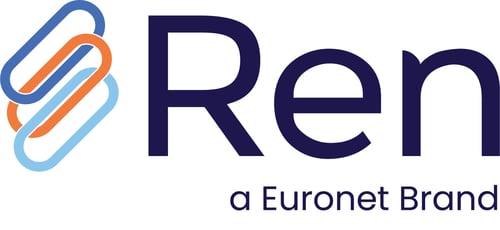How do Instant or Real-time payments work?
What are real-time or instant payments?
The value of instant payments to a financial institution and its customers is that the money is quickly verified as available and gets where it needs to go within seconds or minutes, instead of days. This helps the sender of a transaction and the receiver maintain an up-to-the-minute accounting of the money available in each account.
We explained this recently here: What are real-time payments?, but how does an instant payment or a real-time payment actually happen? Before we walk you through that process, let’s take a moment to explain use of the terms faster payments, instant payments and real-time payments.
The difference between faster, instant and real-time payments
The Atlanta Federal Reserve blog recently asked and answered the question this way:
“Is there a difference? The short answer is yes, there are differences, but it depends on who you ask
and what the reference is,” noted Lali Shaffer, the payments risk expert in the Retail Payments Risk Forum at the Atlanta Fed. “Is the person you're speaking with referring to a payment rail, a formal name of a system, or description of a payment? In general, these words describe the speed of settlement, not speed of initiation.”
Shaffer added that it’s important to clarify with all parties involved that the payment settlement definition is mutually known and agreed upon.
“The term that came first and is often used globally is faster payments … but not all faster payments are instant,” Shaffer clarified. “Here in the United States, the Fed uses instant payments as a generic term that encompasses the central bank service, FedNow, and the private network RTP (Real-Time Payments), operated by The Clearing House.”
The Clearing House (TCH) describes it similarly in a recent PYMNTS.com article, Instant Payments Have a Supply Problem, not a Demand Problem.
“A lot of consumers and businesses think they have instant payments today,” said Jim Colassano, senior vice president of RTP product development at The Clearing House (TCH). "The fact of the matter is that the digital experience is making people feel like they’ve got an instant payment experience and have had for years.
Even though a lot of companies have been able to create instantaneous digital experiences for their customers, the clearing and settlement of the payments have run over traditional rails and can sometimes take days for money to move, which is a kind of interesting dilemma, and it also creates risk within the payment structure.”
Instant payments, driven by a growing expectation for immediacy and enhanced user experiences, aim to bridge this gap by providing a seamless connection between digital transactions and the actual movement of funds.
After establishing the definition of instant payments, what happens next?
While instant payment systems have existed around the globe for many years, it is relatively new in the U.S. The instant payment process, regardless of definition, begins and ends the same way.

The Instant Payment Process
The process from initiation of an instant payment to a person, a business, or a bank is fully automated and can happen quickly. For the financial institutions involved as senders and recipients of funds this exchange happens almost immediately after funds are transferred at the end-user level. This means that the two parties involved in the transaction get the impact of the transfer on their settlement accounts almost immediately. Here are the steps:
Step 1: Payment is initiated. This can be done by a payment entity, a business, or an individual. Usually, payment is initiated via a mobile app or an online banking platform, but it can also be requested in person at a financial institution.
Step 2: Payment Details Sent. The sender confirms the recipient’s account number or other account identifier (e.g., email address or mobile number), amount to send and any other information requested by the recipient to complete the transaction.
Step 3: Payment Authorized. As the payment moves from initiator to sender, the financial institution validates the payment request. This is usually a confirmation of balance available to make the payment as well standard fraud checks, which include checking for any fraud alerts on the account, and ensuring the transaction meets all security requirements. After those checks are made, the receiving financial institution validates the payer’s request to make a payment and authorizes this person’s institution to send the payment.
Step 4: Payment Routed. Once a payment is authorized, it is routed in the U.S. through what is called an instant payments “payment rail” which is currently either FedNow or TCH’s RTP.
Step 5: Payment Notification. The financial institution of the payment recipient is notified of the payment request and validates it, then alerts the recipient of the pending transfer.
Step 6: Funds Transfer. After notifications and checks, money is moved from the payer's account and delivered to the payee's account.
Are you looking for ways to take advantage of the instant payments wave for your institution? In a recent Payments Journal podcast, Getting the U.S Banking Market Ready for Instant Payments, you will discover how banks in the U.S. can and should move forward now on the real-time rails available in the U.S.-based networks, and how they can leverage technology to modernize their legacy platforms to drive instant payments success. You can also learn more at https://www.renpayments.com/payment-hub/.
Upgrade to Next-Gen Payments Technology
The rapid evolution of payment technology demands forward-thinking strategies. Our guide offers detailed insights to help you modernize your systems and keep pace with industry advancements. Prepare for the future—download your guide today!
Learn more about the REN Payments platform here.
Read More About:
Card Issuing
Switching
ATM Management
Payment Platform
Dynamic Currency Conversion
Payment Hub
Real-Time Payments
Comments



